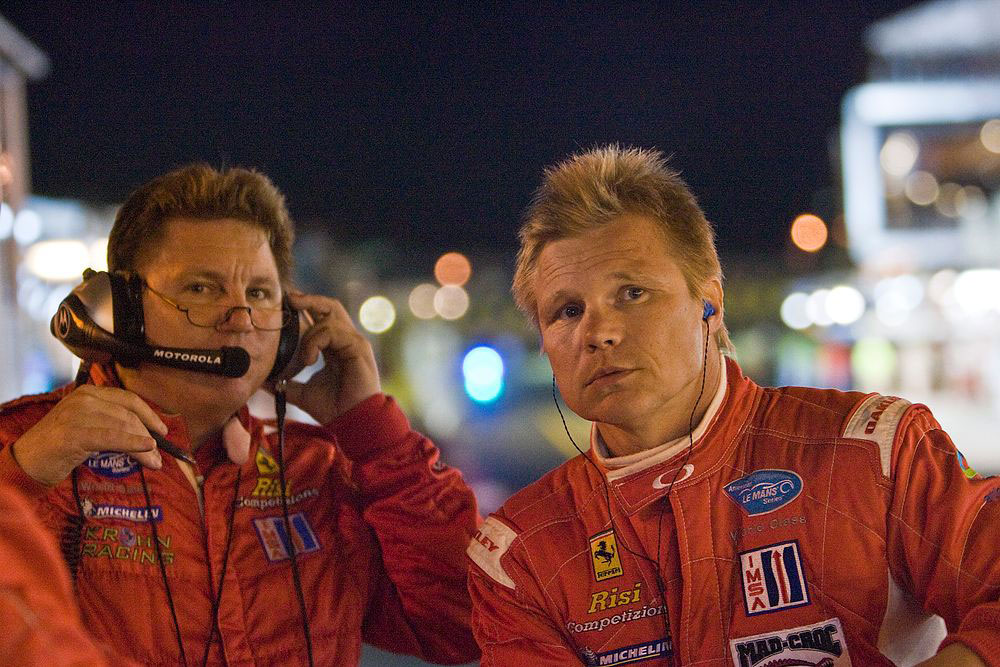Inside track with Risi’s Rick Mayer: Lime Rock
 |
| Rick Mayer (Left) with Mika Salo |
Track particulars: How much grip will the new pavement have? The track is the question. It has been fully repaved and some track configuration changed. The complete extent won’t be known until we get there and take a drive around the track. It’s still a short 1.51-mile track that GT2s will do in low 50-second laps. It will still be all rights with one left, so it’s a right-hand oval for us.
The chicane curbs were significant previously, but the new configuration is not known; I expect this to still be an important setup area. The bumpy nature should be gone and the grip level a bit of an unknown as we’ll be the first real race on the new surface. Turn 1 will still be the biggest passing opportunity, and the down hill leading onto the front straight will still be important in order to set up a good run onto the straight.
Setup: We’ll run tilt here (left side higher then the right) to keep the left side off the ground while still keeping the car as close to the 50mm minimum ride height as possible. Depending on the car, you’ll also run some cross weight. Normally more right-front weight will let you trail brake longer into T1 without inside-front wheel lockup, and reduce the mid to exit understeer.
The cross weight is good as long as it doesn't make the car oversteer on the rights; RF weight also increases LR weight. You run the right side cambers as straight up as you can (oval setup again). You typically can’t get positive camber; the car isn’t built for that large of an adjustment. You also have to be careful with tire-to-fender clearance when going toward positive camber. Negative camber, which we normally run, provides upper tire-to-fender clearance by tucking the top of the tire into the fender; the negative camber gain (suspension geometry generated) in bump keeps it clear of the fender in roll.
It goes without saying you run maximum downforce here; top speed is quite low, about 150 mph. For GT2 cars that means run as much wing (rear downforce) as you can balance with the front downforce. More downforce (at Lime Rock) increases the exit speed in the last corner and actually increases the front straight top speed. Trimming aero actually reduces top speed here.
The race: Calling the race (race strategy) with the cautions is tricky here. The green lap is so short (about 54 seconds last year for GT2) that the caution laps are only 100 seconds. If your strategy is to wait for the wave-by (on the cautions) you better hope you’re up in front of the queue on the wave-by. By the time you hustle around to pit after the wave-by, there isn’t much time before the green.
It takes roughly 25 seconds to traverse pit lane (this year’s pit lane will be longer), 30 seconds for fuel and 13ish for tires. Not a lot of change left from the 100 seconds, and where you come out on track all depends on where the pace car is when you get the wave-by and how fast the queue is moving in front of you toward the pits. Each stop isn’t automatically full service if you want to stay on the lead lap. If you can run one set of tires or just change left sides you can save valuable time.
The team (crew and drivers) is pumped a bit from the Le Mans result (we won the GT2 category). Hopefully that will help the momentum and keep the good results coming. We need some luck in the States now!
